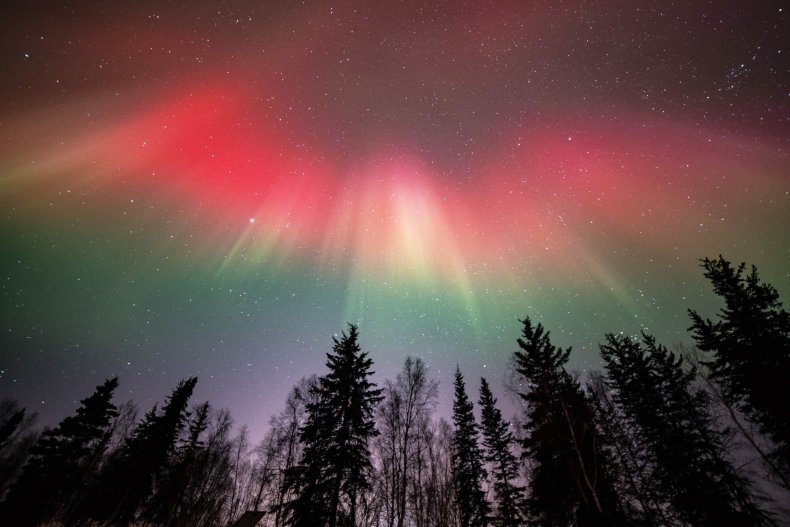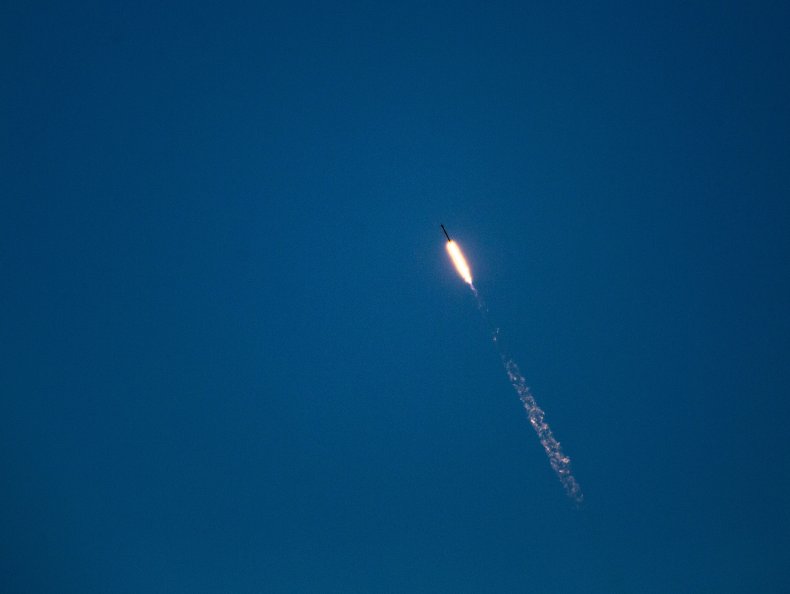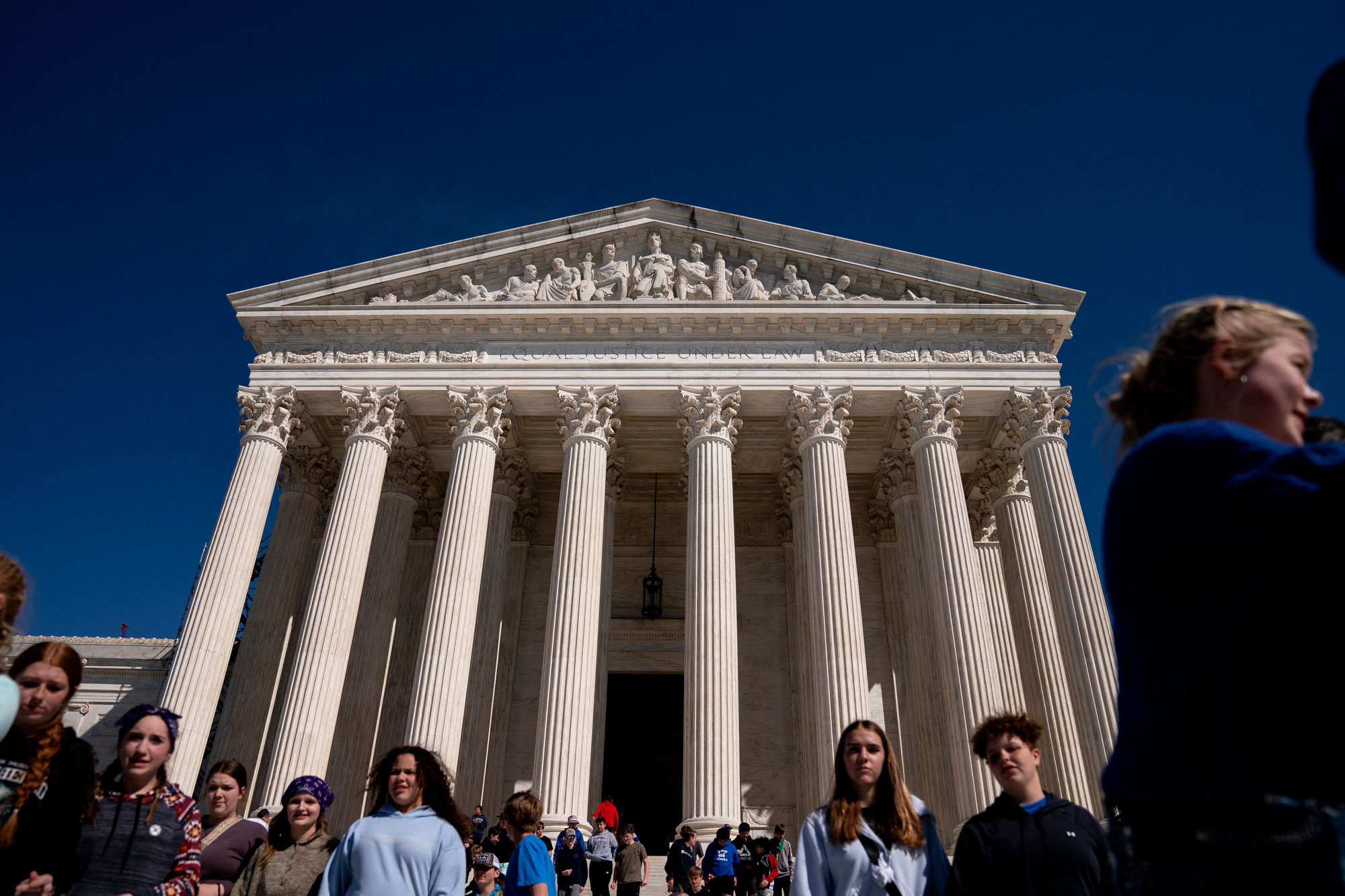The launch of a SpaceX rocket has punched a hole in the planet's ionosphere, leaving a red aurora-like glow in the night sky above California.
The Falcon 9 rocket lifted off on Monday from Vandenberg Space Force Base in California in order to deliver 15 Starlink satellites.
The rocket's exhaust fumes reacted with the Earth's ionosphere, temporarily creating a hole in the layer of ionized gases—a few weeks after another Falcon 9 launch did the same thing.

The ionosphere is the upper layer of the atmosphere, around 50 to 400 miles above the Earth's surface. It is filled with charged atoms, called ions, that glow red or green during the aurora as they react with solar wind and radiation from coronal mass ejections or solar flares.
This layer is essential to radio communication because it reflects and refracts radio signals between the sender and receiver, which is why solar flares can cause radio blackouts.
The exhaust from rocket launches—containing mostly water and carbon dioxide—can alter the layer's ionization, reacting with the ions. This exhaust can result in a 70 percent drop in ionization in the area that the rocket passes through, particularly in the F-layer at the top of the ionosphere, essentially carving a hole through the layer.
The hallmark red glow is a fingerprint of this hole, as it is a result of oxygen ions reacting with the rocket exhaust. Oxygen ions are also the cause of redder colors in the northern and southern lights.

Several photographers captured pictures of the telltale red glow stretching across the California sky on Monday and posted them on social media.
The holes usually close up as the layer returns to its usual levels of ionization. They may lead to anomalies in ham radio transmission or GPS errors.
"Without considering the rocket launch effects, there are errors from ionosphere, troposphere and other factors that will produce up to 20-meter [65-foot] errors or more," Charles Lin, a professor of earth sciences at the National Cheng Kung University in Taiwan, told Ars Technica in 2018.
These occurrences were once rare, but have become more frequent as the number of rocket launches increases. Not all launches have this effect, however, as some rockets cut off their engines before they reach the F-layer and therefore don't emit exhaust fumes.

In the future, rocket launches may have a larger impact on the ionosphere.
"Human are entering an era that rocket launches are becoming usual and frequent due to reduced cost by reusable rockets," Lin said.
"Meanwhile, humans are developing more powerful rockets to send cargos to other planets. These two factors will gradually affect the middle and upper atmosphere more, and that is worthwhile to pay some attention to."
Do you have a tip on a science story that Newsweek should be covering? Do you have a question about the ionosphere? Let us know via science@newsweek.com.








